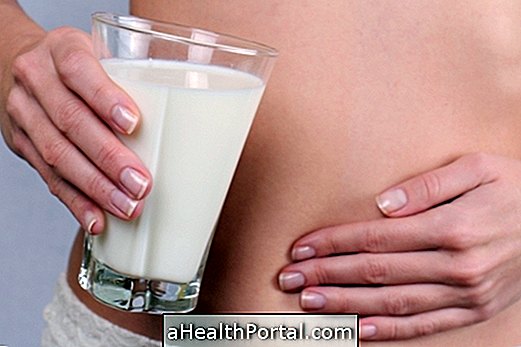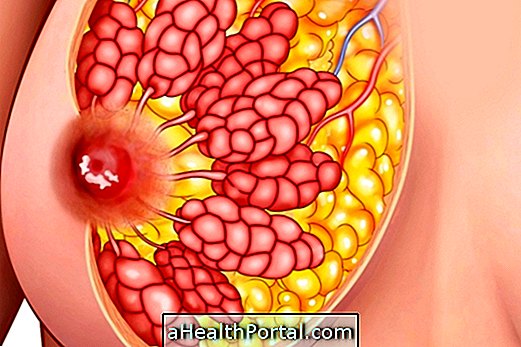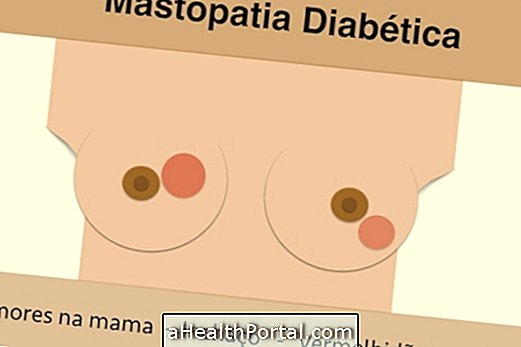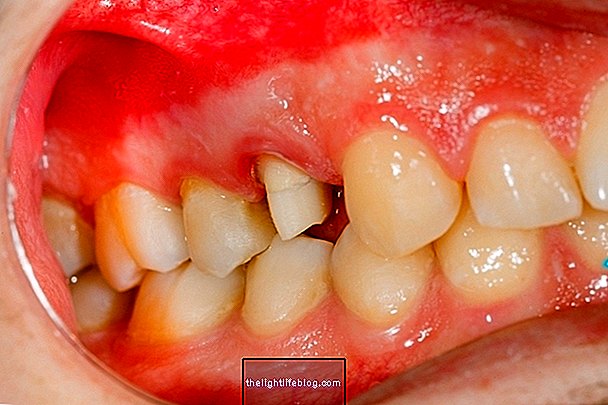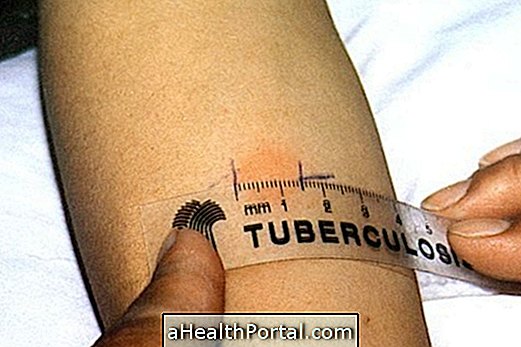The accumulation of fat in the liver, technically called hepatic steatosis, is a fairly common problem that can be caused by risk factors like obesity, diabetes, high cholesterol and excessive consumption of alcoholic beverages.
Although there are not always symptoms, it is possible that some people feel pain in the right side of the abdomen, swollen belly, nausea, vomiting and general malaise. In the presence of these symptoms, a hepatologist should be consulted to perform tests that assess liver function and disease severity. Check out some of the exams that evaluate liver health.
Fat in the liver can be controlled with changes in diet and regular exercise, and it is important to follow the appropriate treatment to avoid complications such as cirrhosis.
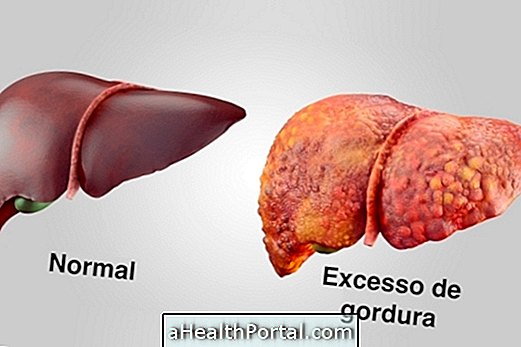
Degrees of hepatic steatosis
Fat in the liver can be classified according to its severity:
- Grade 1 or simple hepatic steatosis: excess fat is considered harmless. Usually there is no symptom and only the problem is discovered through a routine blood test;
- Grade 2 or Nonalcoholic hepatic steatosis: in addition to excess fat, the liver becomes inflamed. Usually, there may be some symptoms like pain in the right side of the abdomen and swollen belly;
- Grade 3 or Liver Fibrosis: There are fat and inflammation that cause changes in the organ and blood vessels around you, but the liver still functions normally;
- Grade 4 or liver cirrhosis: it is the most severe phase of the disease and appears after years of inflammation, being characterized by alteration in the whole liver that causes reduction of its size and leaves its irregular shape. Cirrhosis may progress to cancer or liver death, requiring an organ transplant.
Thus, in addition to assessing the amount of fat in the organ, it is also important to verify the presence of inflammation, as it is the main cause of death of the cells of this organ. To evaluate the progression of the disease, one can use the Hepatic Elastography, which is a quick and painless examination.
Main symptoms
Usually during the early stages of the disease there is no type of symptom and therefore, steatosis is often accidentally discovered through examinations to diagnose other diseases.
However, in later stages, pain may occur in the upper right side of the abdomen, unexplained weight loss, general tiredness and discomfort, and nausea and vomiting, for example. In cases of cirrhosis, other symptoms may also arise, such as yellowing of the skin and eyes, itching of the body and swelling of the belly, legs and ankles.
Check out a more complete list of the symptoms of hepatic steatosis and make our test to know your chances of having the problem.
Who is most at risk
The risk of developing liver fat is much higher in people who consume alcohol, however, the risk may also be higher when there are other risk factors, such as:
- Obesity;
- Type 2 diabetes;
- High pressure;
- High cholesterol;
- Age greater than 50 years;
- Be a smoker;
- Have hypothyroidism.
In addition, bariatric surgery and other weight loss procedures increase the risk of developing liver fat due to changes in metabolism caused by rapid weight loss. However, this problem can also occur in people who do not have any risk factor, and may even affect children and pregnant women.
How to confirm the diagnosis
Changes in the liver can be detected initially through a blood test that evaluates the substances produced by that organ. And if there are altered values that indicate that the liver is not working well, the doctor may ask for additional tests such as ultrasound, tomography, hepatic spasm, magnetic resonance imaging or a biopsy.
However, it is important to note that liver fat does not always cause changes in blood tests, which can delay the diagnosis of the disease until the patient has an ultrasound to investigate other problems.
Understand better how to arrive at the diagnosis
The presence of hepatic steatosis is not always represented by changes in the hepatogram, and the results that evaluate the presence of cellular lesion, cholestasis and liver function should be taken as described below:
Examination of hepatocellular lesion
Transaminases are released into the blood following liver damage. AST, formerly known as TGO, is produced in the liver, kidneys and muscle, and its elevated levels are more linked to liver damage, while ALT, formerly called TGP, is also expressed in heart, muscle, and erythrocytes.
Alkaline phosphatase is produced in the placenta, kidney, intestine and leukocytes, and may also be increased during adolescence and pregnancy. Finally, gammaglutamyl transpeptidase, acronym GGT, can be found in the renal tubules, liver, pancreas and intestine.
Liver function tests
To assess liver function, the results of albuminemia, bilirubinemia and prothrombin time should be checked, important products that reflect liver function.
Diagnostics
The presence of abnormal liver exams may indicate:
- Alcoholic Liver Disease: The AST / ALT ratio is typically 2: 1 or higher. In cases of unreliable clinical history, normal results of alkaline phosphatase, elevated GGT and macrocytosis suggest this diagnosis;
- Chronic Viral Hepatitis: causes changes in several parameters of liver function;
- Autoimmune hepatitis: arises mainly in young and middle-aged women with autoimmune diseases, such as rheumatologic problems and autoimmune thyroid.
- Hepatic steatosis: the most common cause of changes in liver function, but its diagnosis is exclusion. Observe the presence of obesity, diabetes and dyslipidemia, and biopsy is the safest means of diagnosis.
- Ischemic hepatitis: arises in cases of low circulatory volume, such as hypotension and hemorrhage, and has elevated ALT, AST and lactate dehydrogenase.
- Toxic hepatitis: identified primarily by collecting a complete history of the patient, but the most frequent cause of paracetamol overdose.
- Cholestatic liver injury: slightly elevated AST and ALT, along with increased alkaline phosphatase and GGT.
If the patient has no symptoms and all initial evaluations are negative, initiate treatment with changes in lifestyle, weight loss, control of comorbidities, and suspension of potentially hepatotoxic medications such as Amiodarone.
The examination should be repeated after 6 months, and in case of persistence of the changes, perform ultrasound, and may be necessary the prrescription of complementary tests such as tomography and biopsy.
How is the treatment done?
The treatment for fat in the liver is mainly made with changes in the diet, regular practice of physical exercises and the elimination of alcohol consumption. In addition, it is also necessary to lose weight and control diseases that make the problem worse, such as diabetes, hypertension and high cholesterol, for example. Here's an example of what the fat diet in the liver should look like.
There are no specific remedies for treating hepatic steatosis, but your doctor may recommend hepatitis B vaccines to prevent further liver disease. Some home remedies may also be used to aid in treatment such as thistle or artichoke tea, and it is important first to ask your doctor's authorization before using them.
The following video brings tips from our nutritionist to control and reduce liver fat:





